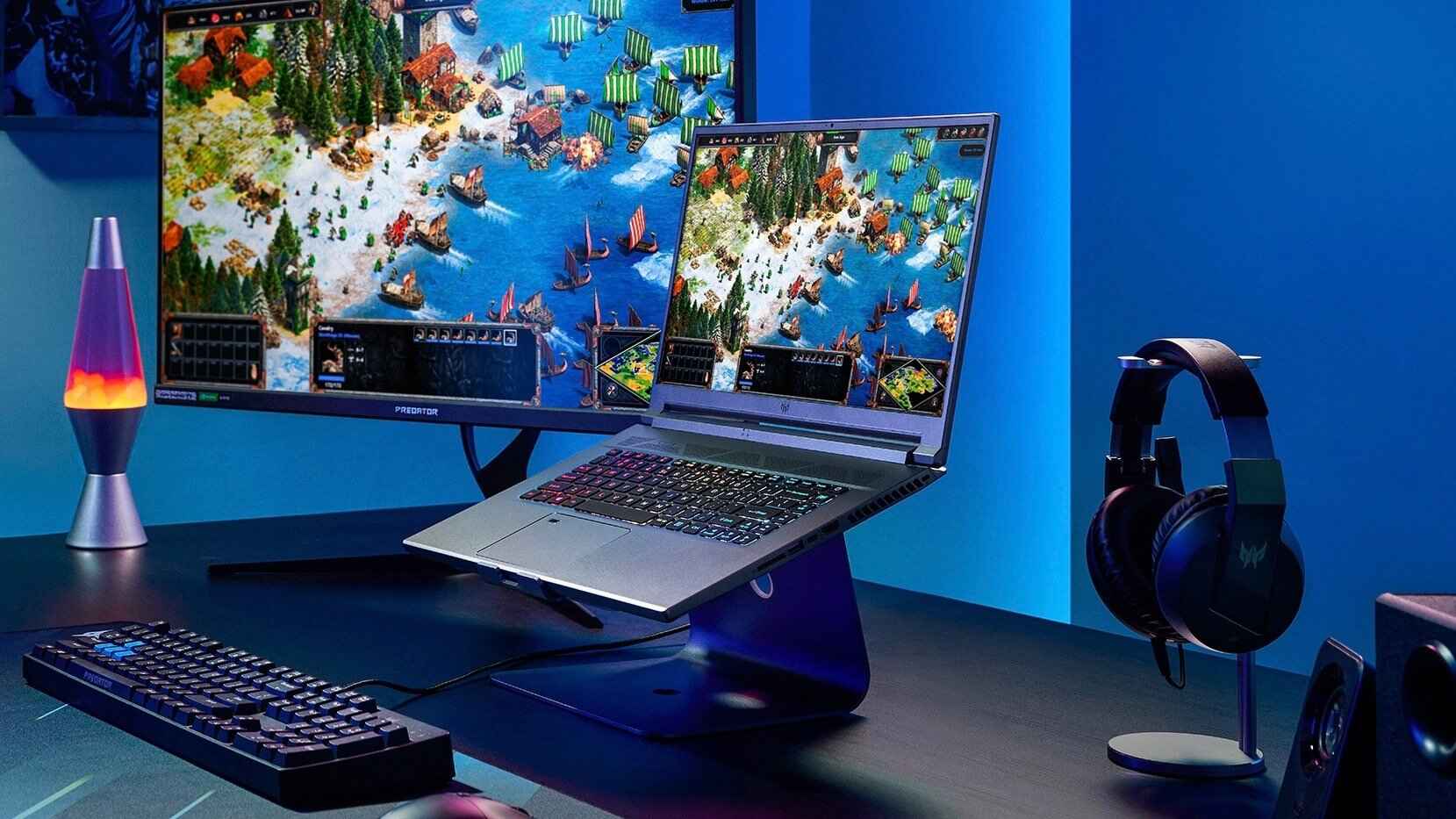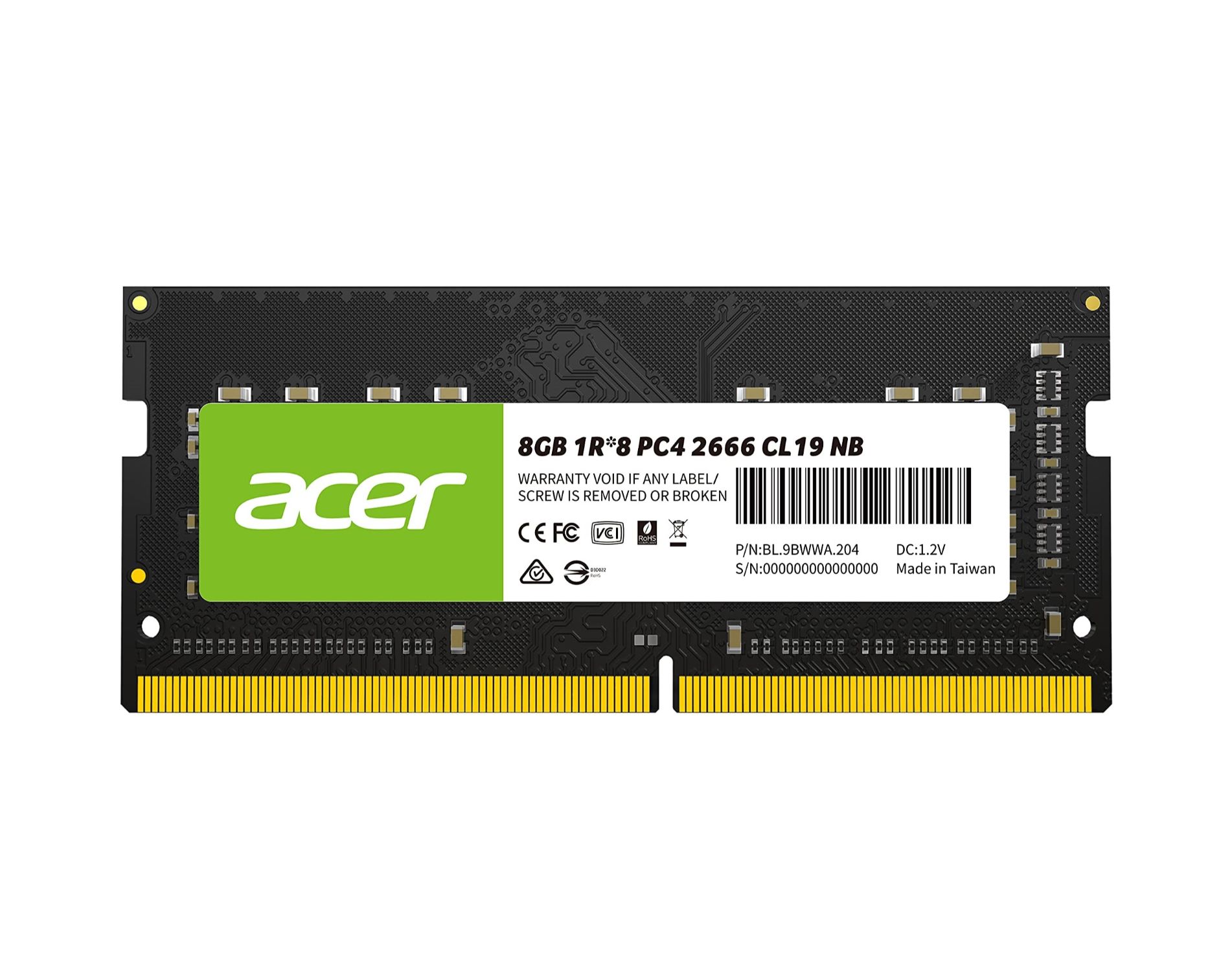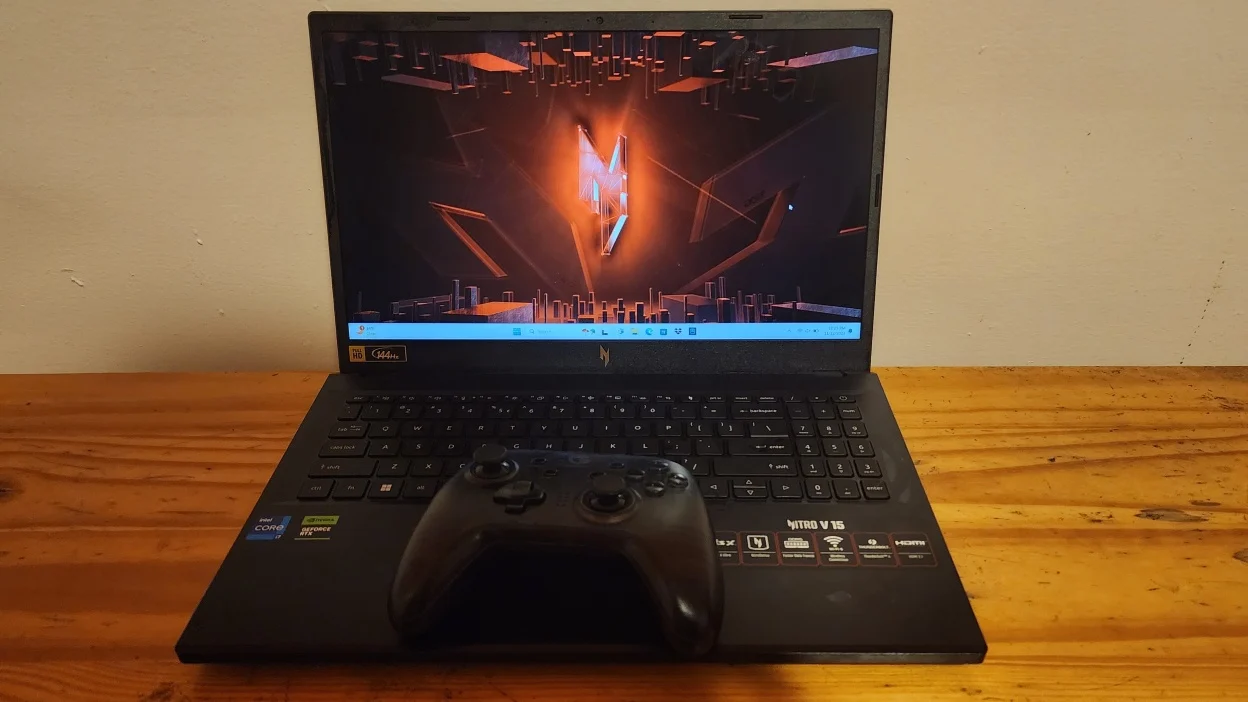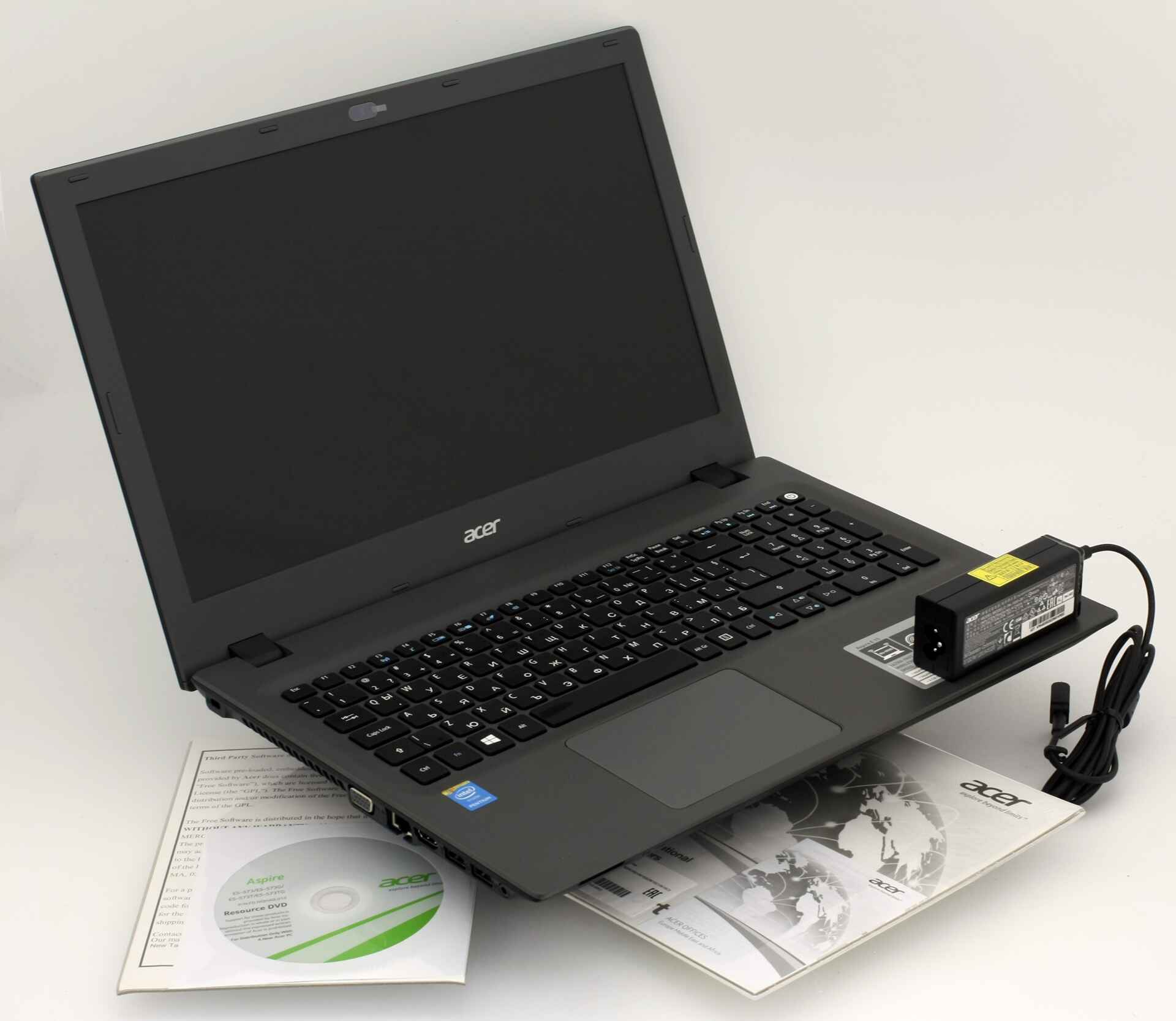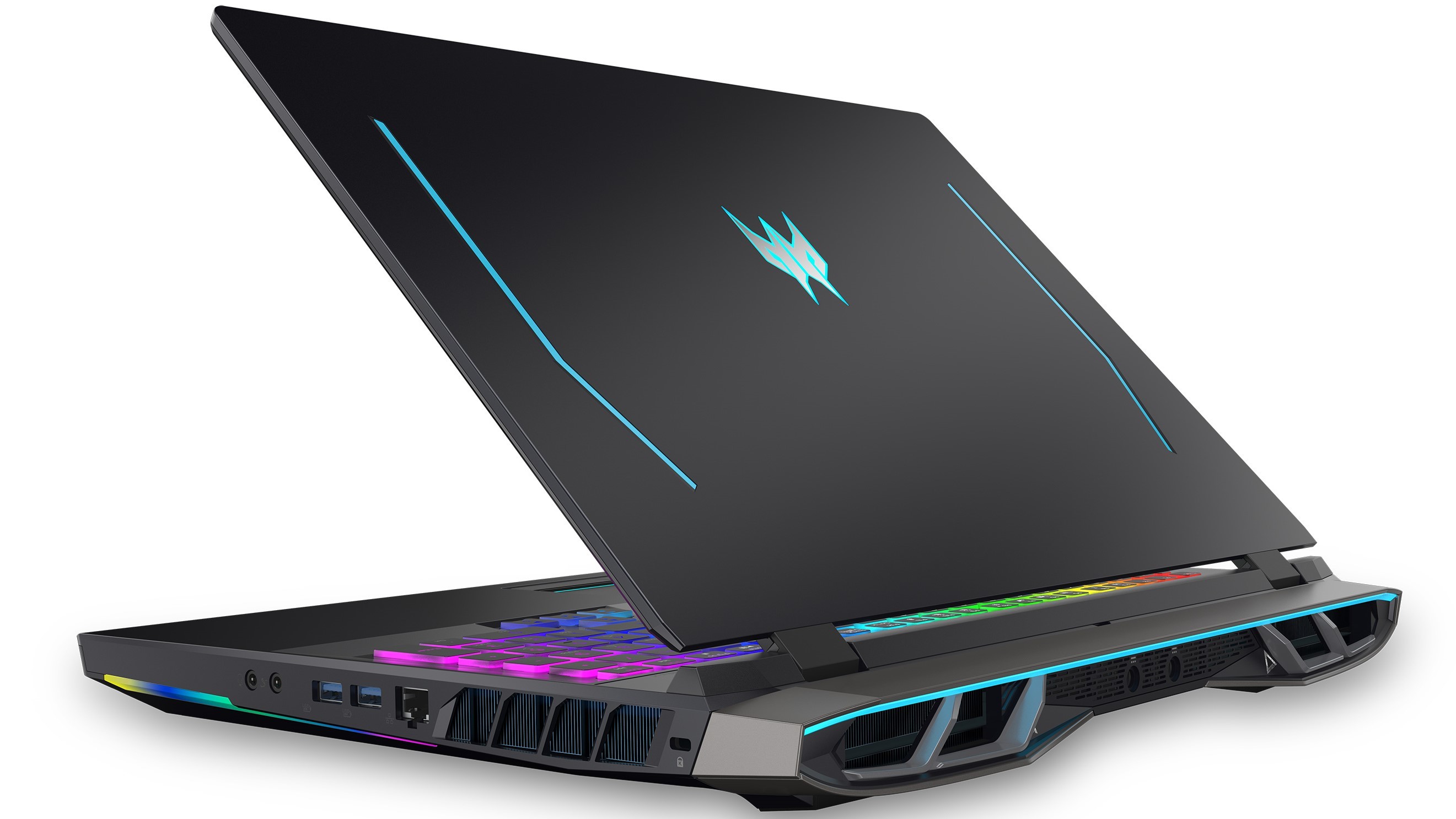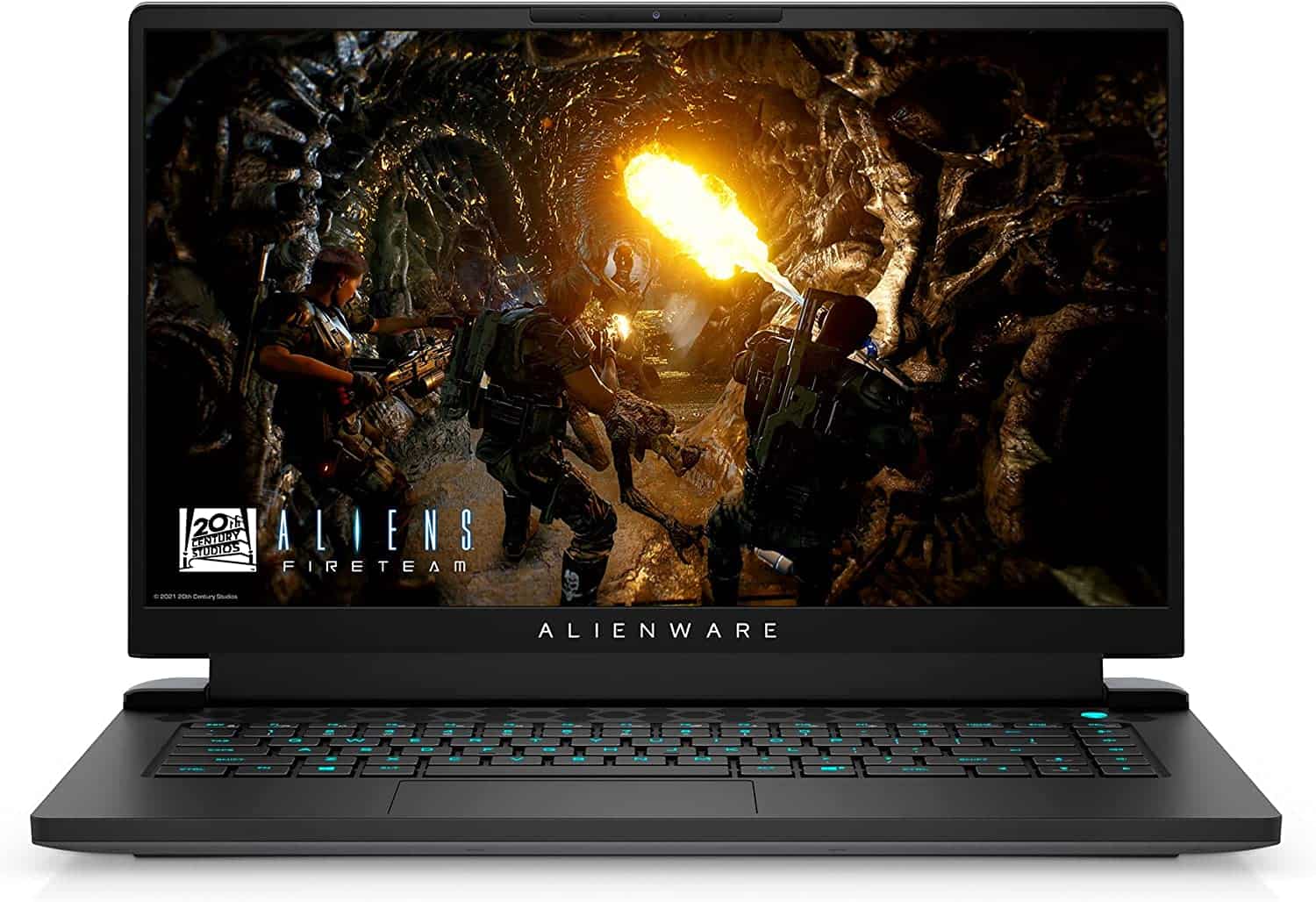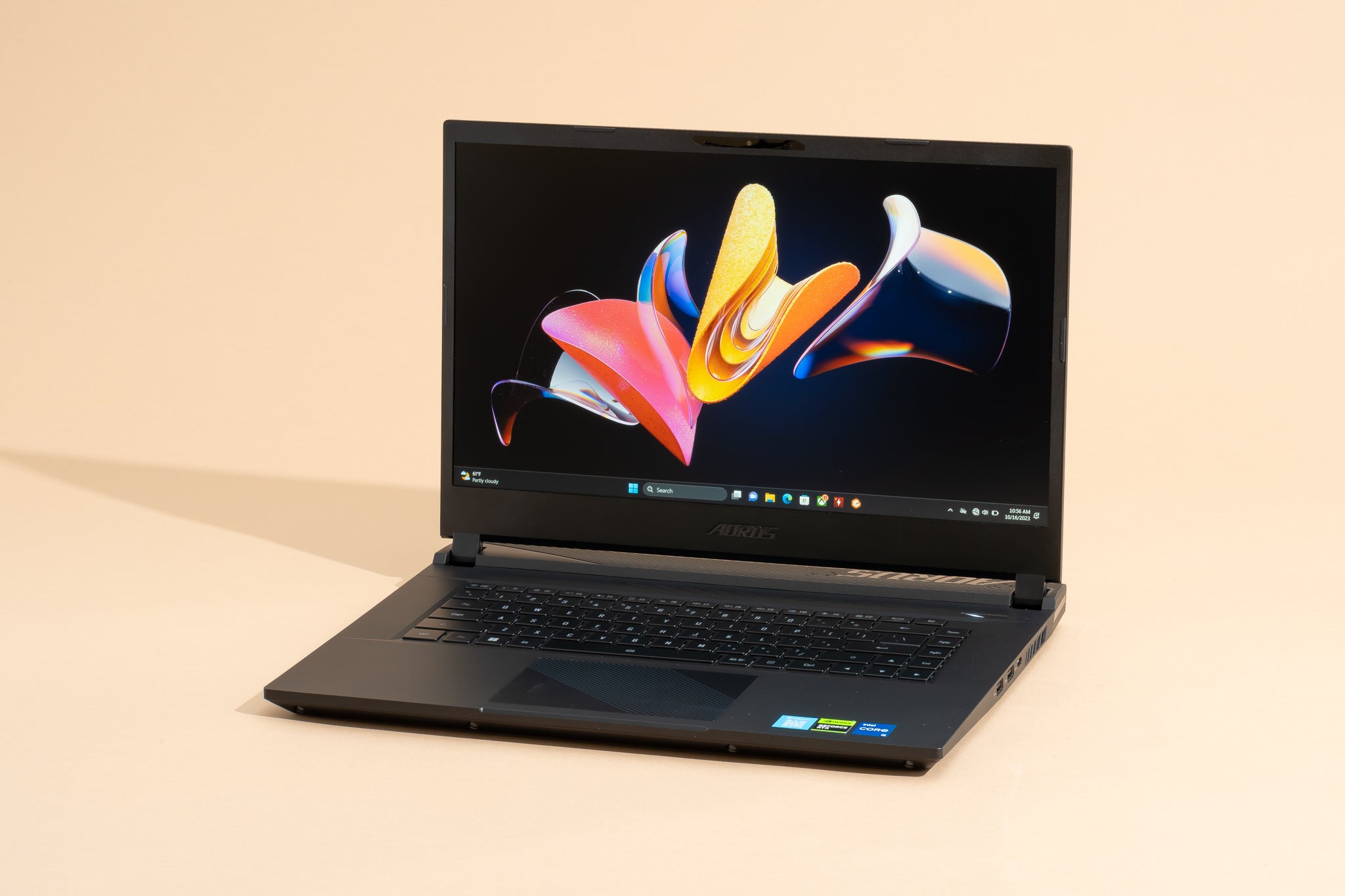Introduction
Gaming on a laptop has become increasingly popular, and many gamers are looking for ways to optimize their laptops for a smooth gaming experience. While Acer laptops are known for their reliability and performance, they may require a few adjustments to meet the demands of modern games.
In this article, we will explore several strategies to transform your Acer laptop into a gaming powerhouse. By following these steps, you can significantly enhance your gaming experience and enjoy immersive gameplay without breaking the bank.
Whether you’re a casual gamer looking to play the latest titles or a dedicated enthusiast seeking peak performance, this guide will offer practical solutions to upgrade your Acer laptop’s gaming capabilities. From optimizing software settings to upgrading hardware components, we will cover a range of techniques to help you get the most out of your gaming sessions.
Before we delve into the specific strategies, it’s important to note that every laptop is unique, and the results may vary depending on your laptop’s specifications and model. Therefore, it’s essential to research and understand your specific laptop’s capabilities and limitations before implementing any modifications.
With that said, let’s dive into the world of Acer laptop gaming and explore the various steps you can take to transform your laptop into a gaming powerhouse. From updating graphics drivers to overclocking your CPU, we will guide you through the process of optimizing your Acer laptop for an exceptional gaming experience.
Update Graphics Drivers
One of the most crucial factors in optimizing your Acer laptop for gaming is ensuring that you have the latest graphics drivers installed. Graphics drivers act as a bridge between your operating system and the graphics card, enabling smooth communication and maximizing performance.
To update your graphics drivers, you can visit the official website of your graphics card manufacturer, such as NVIDIA or AMD, and search for the latest drivers specific to your graphics card model. Download and install the drivers, following the provided instructions. Alternatively, you can utilize driver update software like Driver Booster or Driver Easy to automatically detect and install the latest drivers for your system.
Updating the graphics drivers offers several benefits. First and foremost, it ensures compatibility with the latest games, as game developers often optimize their titles for the most recent driver versions. Having updated drivers also resolves any bugs or issues that may hinder the performance of your games.
Moreover, updating your graphics drivers can improve both the visual quality and performance of your games. New driver releases often come with optimizations and enhancements, allowing your graphics card to deliver smoother frame rates and better graphical fidelity.
It’s important to note that regularly updating your graphics drivers is crucial, as manufacturers frequently release new driver updates to address compatibility issues and improve performance. By staying up to date with the latest drivers, you can ensure that your Acer laptop is primed for optimal gaming performance.
Increase RAM
One of the most effective ways to upgrade your Acer laptop’s gaming performance is by increasing its RAM (Random Access Memory). RAM is responsible for temporarily storing data that your laptop’s processor needs to access quickly. More RAM allows your laptop to handle multiple tasks simultaneously, resulting in smoother and more responsive gameplay.
To determine the maximum amount of RAM your Acer laptop can support, you can refer to the documentation or the manufacturer’s website. Once you have this information, you can purchase compatible RAM modules to upgrade your laptop’s memory capacity.
Upgrading your laptop’s RAM is relatively straightforward. Start by turning off your laptop and disconnecting it from any power sources. Then, locate the RAM slots on your laptop’s motherboard. Carefully remove the existing RAM modules by pushing out the retaining clips and gently sliding the modules out. Insert the new RAM modules firmly into the empty slots, ensuring they are properly aligned. Finally, press down on the modules until the retaining clips lock them into place.
Once you have installed the additional RAM, restart your laptop and check if it recognizes the upgraded memory. You can verify this by accessing the system information or task manager on your laptop. If the new RAM is detected, you can start enjoying the benefits of increased memory capacity.
Increasing your laptop’s RAM provides several advantages for gaming. It allows your laptop to load game data faster, resulting in reduced loading times. It also enables your laptop to store more game assets in memory, providing smoother gameplay with fewer stutters or lags.
In addition to gaming, having more RAM also enhances overall system performance. It allows you to run resource-demanding applications simultaneously, such as video editing software or virtual machines, without experiencing significant slowdowns.
Keep in mind that while increasing your laptop’s RAM can enhance gaming performance, it may not be the sole solution for all performance issues. Other factors, such as the graphics card and processor, also contribute to gaming performance. Therefore, it’s important to consider a holistic approach when upgrading your laptop for gaming purposes.
Upgrade Storage
Upgrading your Acer laptop’s storage can have a significant impact on its gaming performance. Traditional hard disk drives (HDDs) can be a bottleneck in terms of data transfer speed, leading to longer loading times and slower game performance. By upgrading to a solid-state drive (SSD), you can greatly enhance your laptop’s storage capabilities and improve gaming experience.
An SSD operates on flash memory technology, providing faster access times and data transfer rates compared to HDDs. This means that games and applications installed on an SSD can load more quickly, reducing game loading times and improving overall responsiveness.
Before choosing an SSD, consider the capacity you require. It’s recommended to opt for an SSD with ample storage space to accommodate your games and other applications. Additionally, ensure that the interface of the SSD is compatible with your laptop’s connectors. Most Acer laptops support the SATA interface, but newer models may utilize the faster NVMe interface.
Upgrading your laptop’s storage typically involves backing up your data, removing the old storage drive, and replacing it with the new SSD. It’s essential to follow proper procedures, consult the laptop’s user manual, or seek professional assistance if needed.
Once you have installed the new SSD, reinstall the operating system and your games on the upgraded storage. You will also need to transfer any saved game files or data from the old storage drive to the new SSD.
By upgrading to an SSD, you will notice significantly shorter game loading times and improved overall system performance. The difference in data transfer speed can be especially noticeable in open-world games or games with large texture files.
In addition to a faster gaming experience, SSDs also offer other benefits, such as silent and cool operation. Unlike HDDs, SSDs have no moving parts, which makes them more durable and less prone to mechanical failure.
While upgrading to an SSD is highly recommended, if budget constraints prevent you from doing so, you can consider hybrid drives which combine the efficiency of an SSD with the storage capacity of an HDD. These drives automatically prioritize frequently accessed data onto the SSD portion, providing a balance between speed and capacity.
Overall, upgrading your Acer laptop’s storage to an SSD or a hybrid drive can greatly enhance gaming performance, reduce loading times, and bring an overall improvement in your laptop’s responsiveness.
Optimize Windows Settings
Optimizing the settings of your Windows operating system can significantly improve the gaming performance of your Acer laptop. By making a few tweaks and adjustments, you can enhance system resources, reduce unnecessary background processes, and allocate more power to your games.
First, ensure that your Windows operating system is up to date. Keeping your system updated with the latest patches and updates helps optimize performance and security. Windows updates often include performance improvements and bug fixes, so regularly checking for and installing updates is essential.
Next, adjust the power settings of your laptop for optimal gaming performance. Access the power options by right-clicking on the battery icon in the taskbar and selecting “Power Options.” Choose the “High Performance” power plan or create a custom power plan with settings optimized for performance. This ensures that your laptop utilizes maximum power and resources when running games.
Furthermore, disable unnecessary visual effects to reduce the strain on system resources. Right-click on the “This PC” icon on your desktop, go to “Properties,” and click on “Advanced system settings.” In the Performance section, click on “Settings.” Here, you can choose to adjust visual effects for best performance or selectively enable the effects you find important for your gaming experience.
Another setting to optimize is the Windows Game Mode. This feature, available in Windows 10, prioritizes system resources for gaming when enabled. To activate Game Mode, press Windows key + G to open the Game Bar, click on the settings icon, and enable Game Mode. This can help allocate more CPU and GPU resources to your games, resulting in smoother gameplay.
Additionally, disabling unnecessary background processes and applications can free up system resources. Press Ctrl + Shift + Esc to open the Task Manager and go to the “Processes” tab. Identify resource-heavy processes that are not essential for your gaming experience and end them. Disable any startup programs that are not required during gaming to improve system performance further.
Lastly, ensure that your laptop is free from malware and viruses. Use reputable antivirus software to regularly scan and protect your system from any potential threats. Viruses and malware can significantly impact gaming performance, so keeping your laptop secure is crucial.
By optimizing these Windows settings, your Acer laptop will be better equipped to handle demanding games, resulting in smoother gameplay, reduced input lag, and improved overall performance.
Overclock Your CPU
If you’re looking to squeeze out some extra performance from your Acer laptop, overclocking your CPU can be an effective solution. Overclocking involves pushing your CPU beyond its default clock speed to achieve higher processing power, which can translate into improved gaming performance.
Before attempting to overclock your CPU, it’s important to understand the risks involved. Overclocking can generate increased heat and put additional stress on your CPU, potentially leading to instability, overheating, or even permanent damage if not done properly. Make sure you have adequate cooling solutions in place before proceeding.
Start by accessing your laptop’s BIOS settings. Restart your laptop and press the designated key (usually Del, F2, or F10) during startup to enter the BIOS. Locate the CPU settings or overclocking options in your BIOS menu. The exact location and options may vary depending on your laptop model and BIOS version.
When overclocking your CPU, you will typically adjust the base clock (BCLK) and the CPU multiplier. Increasing the BCLK or multiplying the CPU multiplier will result in higher overall clock speeds. However, keep in mind that not all laptops allow for CPU overclocking, so check if your laptop’s BIOS supports this feature.
It’s recommended to increase the clock speed gradually, testing for stability after each adjustment. Stress test software like Prime95 or AIDA64 can help assess the stability of your overclocked settings. If your laptop becomes unstable or crashes during the stress test, you may need to reduce the clock speed or adjust the voltage settings to achieve stable operation.
Keep a close eye on your laptop’s temperatures when overclocking, as higher clock speeds generate more heat. Use monitoring software like HWMonitor or Core Temp to keep an eye on CPU temperatures. If temperatures exceed safe limits, consider investing in additional cooling solutions, such as a laptop cooling pad or an external fan.
Remember that every CPU is different, and the potential for overclocking varies. While some CPUs may have significant headroom for overclocking, others may not be as flexible. It’s important to research your specific CPU model and consult forums or guides dedicated to overclocking to gain insights and recommendations from experienced users.
Lastly, it’s crucial to stress that overclocking your CPU carries risks, and any modifications made within the BIOS are done so at your own discretion. Always proceed with caution and take the necessary steps to mitigate any potential risks.
If done correctly, overclocking your CPU can unlock additional processing power and deliver a noticeable performance boost, resulting in smoother gameplay and faster frame rates on your Acer laptop.
Use a Cooling Pad
Keeping your Acer laptop cool is essential for optimal gaming performance and longevity. When running graphics-intensive games, the CPU and graphics card can generate a significant amount of heat, which can lead to thermal throttling and decreased performance. Using a cooling pad can help dissipate heat and keep your laptop’s temperature in check.
A cooling pad is a device designed to improve airflow around your laptop and reduce heat buildup. It typically consists of a flat surface for your laptop to sit on, with built-in fans or ventilation holes to facilitate air circulation. When placed underneath your laptop, a cooling pad helps draw cooler air from the surroundings and expel hot air generated by the components.
Using a cooling pad offers several benefits for gaming. First and foremost, it helps prevent thermal throttling. When your laptop’s temperature exceeds a certain threshold, it automatically reduces its performance to prevent damage. By keeping your laptop cool with a cooling pad, you can maintain consistent performance levels without experiencing performance dips due to overheating.
Secondly, a cooling pad helps prolong the lifespan of your laptop by reducing the stress on its internal components. Excessive heat can accelerate wear and tear on sensitive hardware, potentially leading to component failures over time. By providing adequate cooling, a cooling pad can help preserve the longevity of your laptop.
When choosing a cooling pad, consider the size and design that best fits your laptop. Ensure that the cooling pad is compatible with your laptop’s dimensions and has sufficient airflow capacity. Look for features such as adjustable fan speeds or additional USB ports, which can enhance convenience and customization options.
To use a cooling pad, simply place it underneath your laptop and make sure it is centered and well-supported. Connect the cooling pad to a USB port on your laptop to power the built-in fans. Some cooling pads also offer additional USB ports for connecting other peripherals.
Remember to clean and maintain your cooling pad regularly to ensure optimum performance. Dust and debris can accumulate on the fan blades and vents, obstructing airflow and reducing cooling efficiency. Use compressed air or a soft brush to clean the cooling pad and remove any accumulated dust.
In addition to using a cooling pad, it’s also important to consider other cooling measures, such as keeping your laptop on a hard, flat surface to allow for better ventilation and airflow. Avoid using your laptop on soft surfaces like beds or couches, as this can block the air vents and impede proper cooling.
By using a cooling pad, you can effectively mitigate overheating and maintain optimal performance for your Acer laptop during intense gaming sessions. It’s a cost-effective and simple solution to prevent thermal issues and enjoy a smoother gaming experience.
Use External Devices
When it comes to transforming your Acer laptop into a gaming powerhouse, utilizing external devices can greatly enhance your gaming experience. These devices can provide additional functionality, improve input precision, and offer immersive audiovisual enhancements.
One of the most common external devices used for gaming is a gaming mouse. Gaming mice are designed with features such as adjustable DPI (dots per inch), programmable buttons, and ergonomic designs to enhance precision and comfort during gameplay. Investing in a high-quality gaming mouse can greatly improve your aiming and control in games, giving you a competitive edge.
Another useful external device to consider is a gaming controller. While most laptops come with built-in keyboards, using a gamepad can provide better comfort and control, especially for games that are designed with gamepad support. Whether it’s an Xbox controller, PlayStation DualShock controller, or a dedicated PC gamepad, having a controller can enhance your gaming experience, particularly for games that are best played with a traditional controller layout.
If you want to enhance your audio experience, investing in a pair of gaming headphones or external speakers is highly recommended. Gaming headphones offer immersive audio quality, allowing you to hear precise sound cues in games, enhancing your gameplay awareness. External speakers can provide a more immersive audio experience, especially for games with dynamic soundscapes or multiplayer games where you want to share the experience with others.
For gamers who prefer a larger display, connecting your Acer laptop to an external monitor or TV can provide a more immersive gaming experience. External displays with higher resolutions and faster refresh rates can enhance visual clarity and reduce motion blur, making your games look and feel more vibrant. Ensure that your laptop supports the necessary video output connections, such as HDMI or DisplayPort, and choose a monitor or TV suitable for gaming purposes.
Additionally, for gamers who enjoy streaming or recording their gameplay, investing in a quality capture card can be beneficial. A capture card allows you to capture and record gameplay footage from your laptop, offering better video quality and additional features compared to software-based options.
Finally, using a laptop cooling pad, as mentioned earlier, can also be considered an external device. It helps maintain lower temperatures by improving airflow and reducing heat buildup, ultimately enhancing your laptop’s gaming performance and longevity.
Consider your gaming preferences and budget when deciding which external devices to invest in. Each device can contribute to a more immersive and enjoyable gaming experience, but it’s important to prioritize based on your specific needs and gaming habits.
By utilizing external devices, you can tailor your gaming setup to suit your preferences, elevate your gaming performance, and enjoy a more immersive and enjoyable gaming experience on your Acer laptop.
Install Game Booster Software
To further optimize your gaming experience on your Acer laptop, installing game booster software can be a game-changer. Game booster software is designed to enhance system performance, streamline system resources, and optimize game settings for maximum gaming performance.
Game booster software works by temporarily shutting down or disabling unnecessary background processes and services, freeing up valuable system resources. This allows your laptop to allocate more CPU, GPU, and RAM power to your games, resulting in smoother gameplay and reduced input lag.
Furthermore, game booster software can automatically adjust game settings to optimize performance based on your hardware specifications. It can fine-tune graphics settings, resolution, and other in-game options to maximize performance while maintaining an acceptable level of visual quality.
There are various game booster software options available, both free and paid. Some popular choices include Razer Cortex, Wise Game Booster, and MSI Afterburner. It’s recommended to research and read reviews to choose a game booster software that best suits your needs and is compatible with your Acer laptop.
Once you have selected a game booster software, download and install it on your laptop. Open the software and explore the available features. Some game booster software may offer additional functionalities, such as in-game overlays to monitor system performance, automatic updates for drivers, and quick launch options for your favorite games.
Before launching a game, open the game booster software and activate its optimization features. This can usually be done with a click of a button or by selecting the game from a list of installed games. The software will then automatically optimize your system settings and prioritize resources for the best gaming performance.
While game booster software can greatly enhance gaming performance, it’s important to note that the actual result may vary depending on your laptop’s specifications. Some laptops may benefit more from game booster software, especially those with limited hardware resources.
It’s also worth mentioning that game booster software is not a magic solution to all gaming performance issues. It can certainly help improve performance, but it cannot compensate for outdated or incompatible hardware. It’s important to maintain your laptop properly by regularly updating drivers, keeping your system clean from malware, and ensuring your hardware meets the minimum requirements for the games you wish to play.
By installing game booster software, you can take advantage of optimizations and tweaks specifically tailored for gaming, allowing you to achieve the best possible performance and enjoy a smoother gaming experience on your Acer laptop.
Conclusion
Transforming your Acer laptop into a gaming powerhouse is an exciting endeavor that can significantly enhance your gaming experience. By following the strategies outlined in this article, you can optimize your laptop’s performance, improve gameplay, and unlock its full gaming potential.
We started by emphasizing the importance of updating your graphics drivers to ensure compatibility, resolve bugs, and unlock performance optimizations specific to your graphics card. Furthermore, we explored the benefits of increasing your laptop’s RAM to handle multiple tasks simultaneously, and the advantages of upgrading storage to faster and more efficient solid-state drives.
We then delved into optimizing Windows settings, such as keeping your operating system up to date, adjusting power settings for maximum performance, and disabling unnecessary background processes to free up system resources.
For those seeking even more performance gains, we discussed the option of overclocking your CPU, provided cautionary reminders, and stressed the importance of proper cooling to prevent overheating.
We also highlighted the significance of using external devices to enhance your gaming experience, including gaming mice for precise control, gaming controllers for enhanced comfort, gaming headphones or speakers for immersive audio, and external displays for a larger and more vibrant visual experience.
Lastly, we emphasized the benefits of utilizing game booster software to streamline system resources, optimize game settings, and improve overall gaming performance.
It’s important to remember that every laptop is different, and the extent to which these strategies can be implemented may vary. Consider your laptop’s specifications, compatibility, and budget when implementing any modifications or upgrades.
By following these strategies, you can take your Acer laptop’s gaming performance to new heights and enjoy a more immersive and enjoyable gaming experience. Experiment with different combinations and find what works best for your specific gaming preferences and laptop’s capabilities.
So, why wait? Start implementing these strategies today and elevate your gaming experience to new levels of excitement and enjoyment with your Acer laptop.







